Samuel Melser:
Samuel Melser wrote an interesting article about “prehistoric photography” which refers to reconstructions of the past in portrait-like photos, the photography of fossils, the photography of the reconstructions of fossils, etc.
Following are some of his points:
During the middle of the 19th century photography became integral to scientific observation. Photography was thought to be capable of providing detailed, accurate and objective depictions of whatever was in front of the camera, giving science a totally transparent window on reality. Today, however, critics and art historians have learnt to deconstruct the easily-doctored pictorial and semiotic devices that constitute a photograph.
For some time now, photography’s pretensions to scientific objectivity have been under scrutiny. Within the discipline of visual studies there now seems to be a general consensus as to the heuristic and epistemological limits of documentary images. It is accepted that they are incapable of faithfully recording any but a few superficial dimensions of reality.
Images that pretend to illustrate nature or reality are nowadays often viewed as little more than subjective interpretations of a constructed and arbitrary vision prescribed by some unacknowledged political, institutional or ideological agenda. Archaeologists are also questioning the objective pretensions of photography in relation to their own methods of research and documentation…
a great number of reconstruction images of prehistoric man reflect the socio-cultural environment in which they were made more than a putative prehistoric reality…
It is now evident to those working in the field of archaeological documentation that there is no natural relationship between reality and its representation…
The notion that a special logical and/or scientific procedure is in operation here is used as a narrative device in all of the ‘sciences of the past’. It helps rationalise the spectator’s inevitable tendency to imaginatively fill in gaps, left by the archaeologist, relating to the morphologies and environments of ancient life forms. Logical deduction is assumed to be employed by the prehistorian in much the same way as it is employed by the detective…
the artist has ‘a license to resurrect’. Within reason, he or she may speculate as much as he or she likes. The artist’s job is to go where the scientist is forbidden to go – to insert a realistic persona and life-force into the morally vacant identikit [“a computer-generated ‘portrait robot’ (a 3D identikit image)”]. In order for the public to fully appreciate the scientific and archaeological findings, the image the artist arrives at must be natural, believable and compelling – such as to require a psychological interpellation, an empathic response, from the viewer…
Although the majority of recent reconstructions, such as those of Elizabeth Daynes, are based on fact, on scientific data, it is impossible to recreate plausibly human-like images of our distant past ancestors without a certain amount of unverifiable speculation. Even though the speculation is educated or informed and the unknown variables are restricted to as few as possible, fictional devices must be employed to gain contact with the spectator.
Ultimately, it is these fictional devices that enable us to communicate with the prehistoric time-travellers, to perceive them as fellow human beings. If a reconstruction sculpture based only on a few scattered and fragmented fossils and footprints is to be credible as a document it should, according to Jorge Wagensberg:‘…be scientifically compatible with the available reality, technically updated in terms of materials and methods, artistically likely to combine beauty with facial expression revealing a certain mood, and finally, it should convey an emotion within a museum context’ (Wagensberg 2007 : 241)…
The anachronism inherent in the concept of prehistoric photography is actually helpful for the contemporary spectator – enabling him to project our modern humanity onto humanlike creatures of long ago…
The apparent objective realism of photography helps create the illusion of an effet du reel and, although we know it is impossible to photograph a prehistoric scene, we still believe this is what we are seeing. The photographic image provides a method of hypernaturalism necessary to convince the public of the truth of the evolution story and the reality of our common ancestry with the great apes.
Hypernaturalism is as much a belief (an ideology) as it is a tendency or a movement. Precision, clarity and detail are characteristics of this representational tendency. All of these are visual strategies the author uses in order to take the spectator on a perceptual journey. Furthermore, the above scenario is analogous with our understanding of the visible world: if something is not ‘clear’, be it idea or thing, it is more difficult to grasp.
The form of scientific representation we are discussing here, reconstruction, is logically ‘realistic’ or more precisely ‘naturalistic’. An ‘abstract’ visual scientific reconstruction of a prehistoric figure is inconceivable. Naturalism as a representative strategy is inherent in the language of this kind of scientific imagery; it is witness to the objective realism the images aspire to…”2
Examples of Reconstructions:
I will emphasize something that he does not very much and that is that artists—photographers, painters, sculptors—are often a scientists’ best friend. This is because the artist can invent “evidence”—where evidence is lacking the artist can simply invent it.
For example, let us consider Elizabeth Daynes’ silicon sculpture reconstruction Lucien, l’Australopitheque:
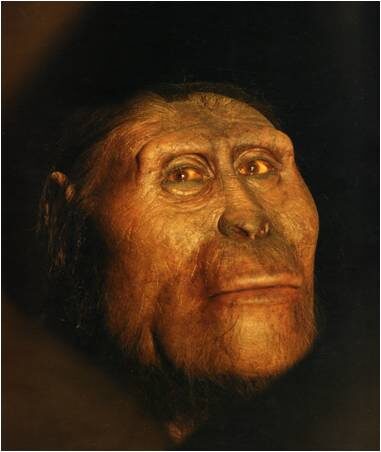
Let us grant that we have as much as a complete and exquisitely preserved skeleton: How does Elizabeth Daynes know what the eyes looked like—her reproduction has whites in the eyes which apes do not have. How does she know what the nose looked like—cartilage does not fossilize. What about the pensive visage? Etc., etc., etc.
This sort of thing is obviously ubiquitous:
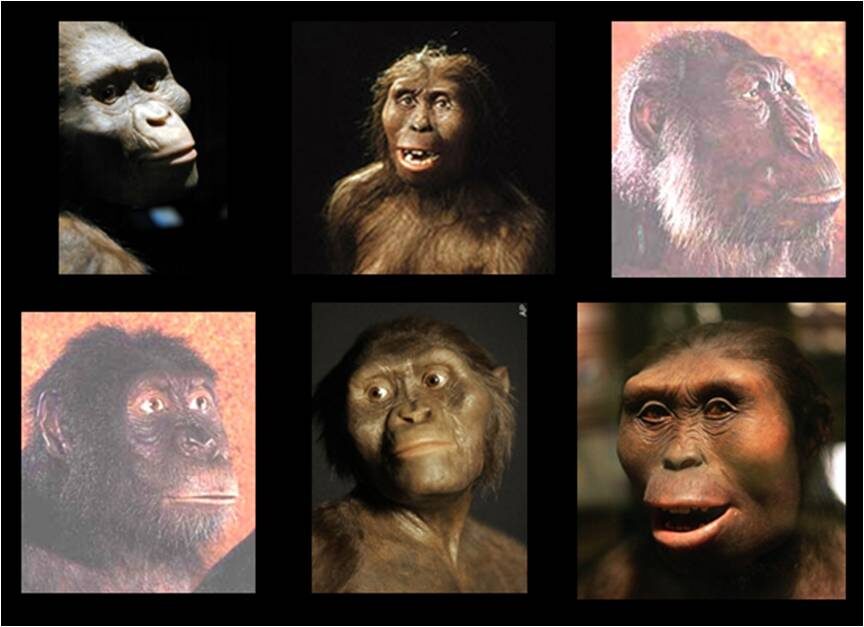
Consider “Nebraska Man”: this is what was presented by the newspaper Illustrated London News in 1922 as representing the fossil find:
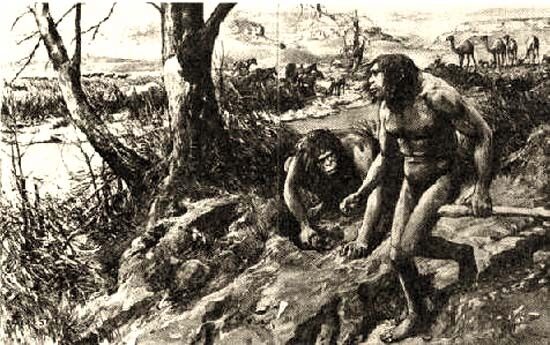
Now consider the actual evidence:
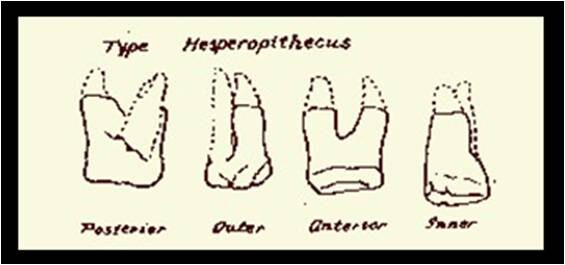
One artists’ representation of an entire scene of two creatures, their habits and habitats based on one pig’s tooth.
What about “Lucy”? Here is the actual fossil find:
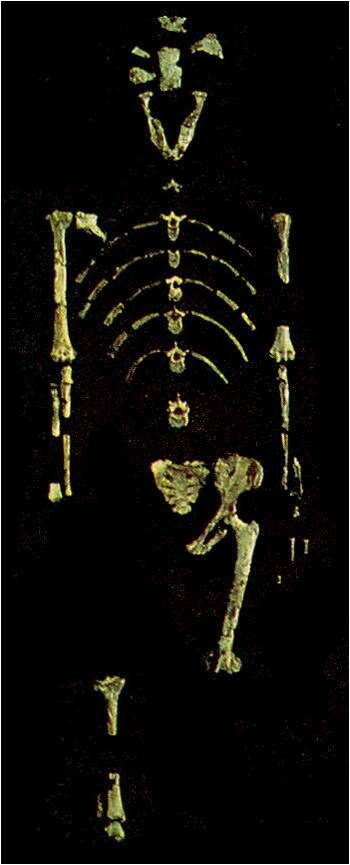
Note the missing feet and mere fractions of one hand. In fact, Lucy’s knee joint was found a mile and a half away from the rest of the skeleton.
Now, consider the reconstruction:
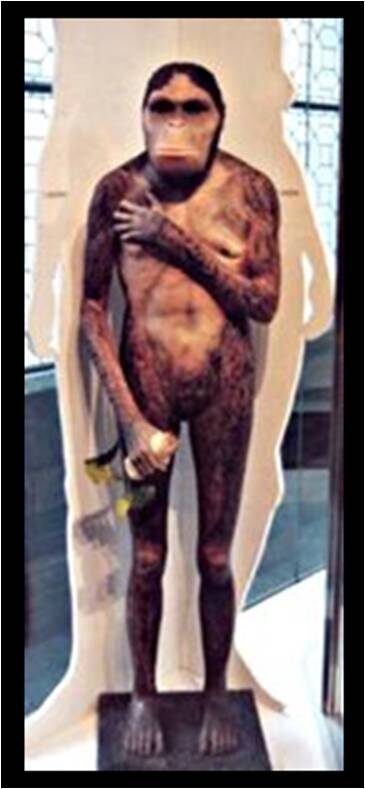
Complete with human-like feet and hands:
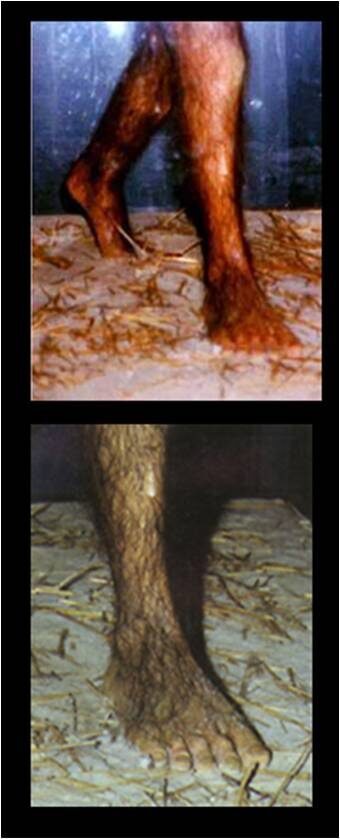
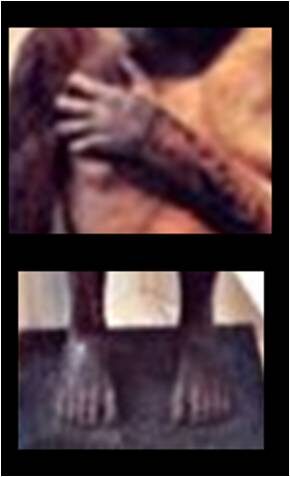
In fact, here is Lucy with her main squeeze:
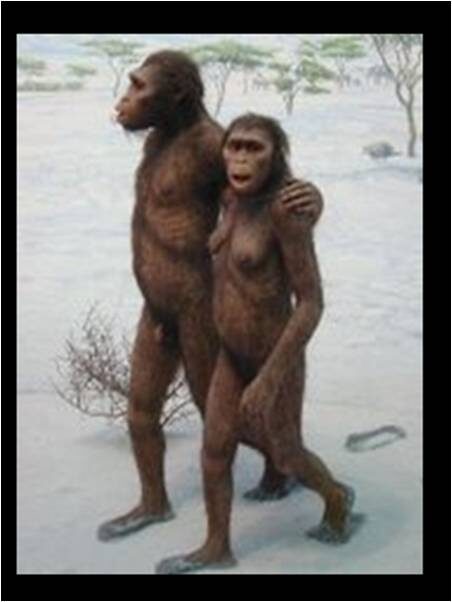
Or consider the reconstruction of Gigantoraptor:
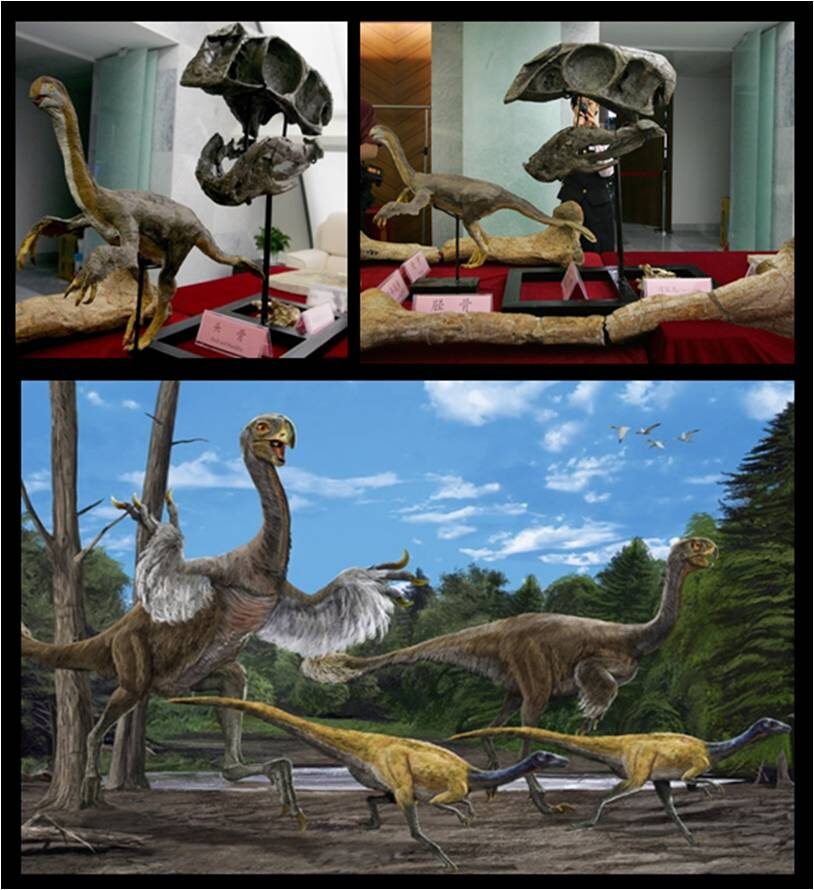
The reconstruction displays feathers while the fossil does not:
Gigantoraptor had long arms, bird-like legs, a toothless jaw, and probably a beak. There are no clear signs as to whether it was feathered. However, judging from its close affinity to other dinosaurs known to have been feathered, Xing Xu of the Institute of Vertebrate Paleontology and Paleoanthropology in Beijing speculates that it was. [emphasis added]3
What about Ambulocetus Natans and Pakicetus:
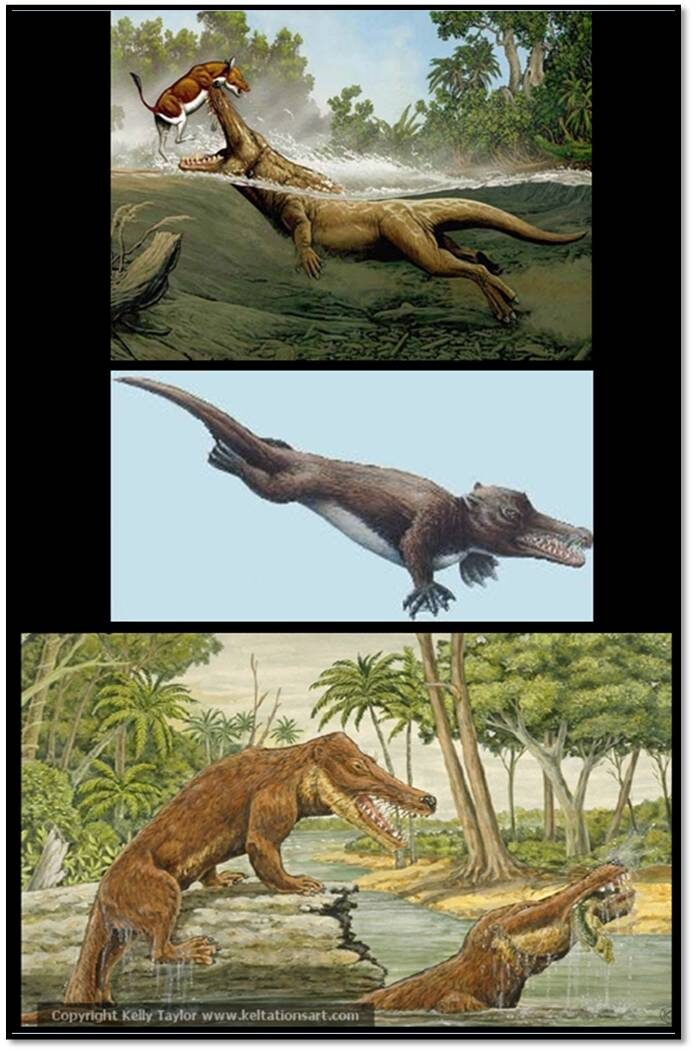

To fur or not to fur, that is the question.
The BBC reported, “Ambulocetus looked like a furry crocodile or a giant otter, it was actually an early whale.” Furry crocodile, giant otter, “early” whale—whatever you want: just draw it, sculpt it, paint it, mold it shape it until it fits your preferred theory. It walks, it swims, it slices, it dices!
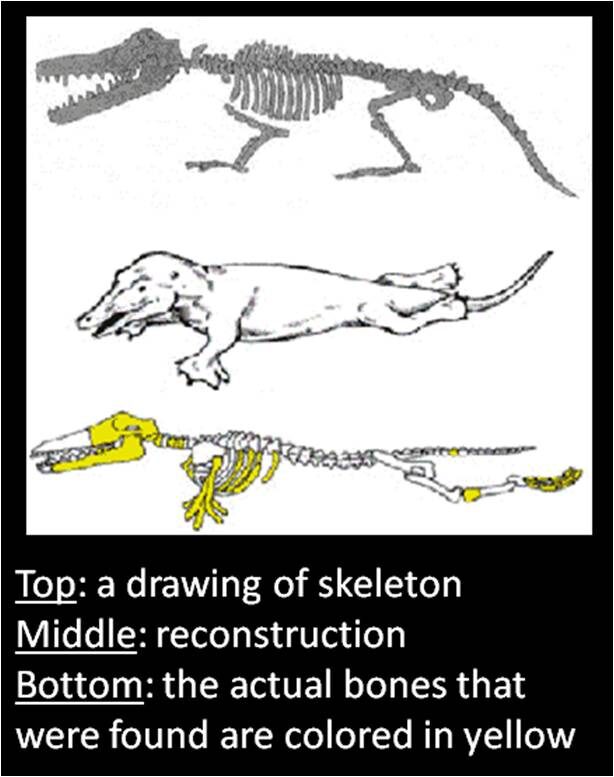
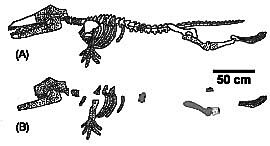
Also consider:
